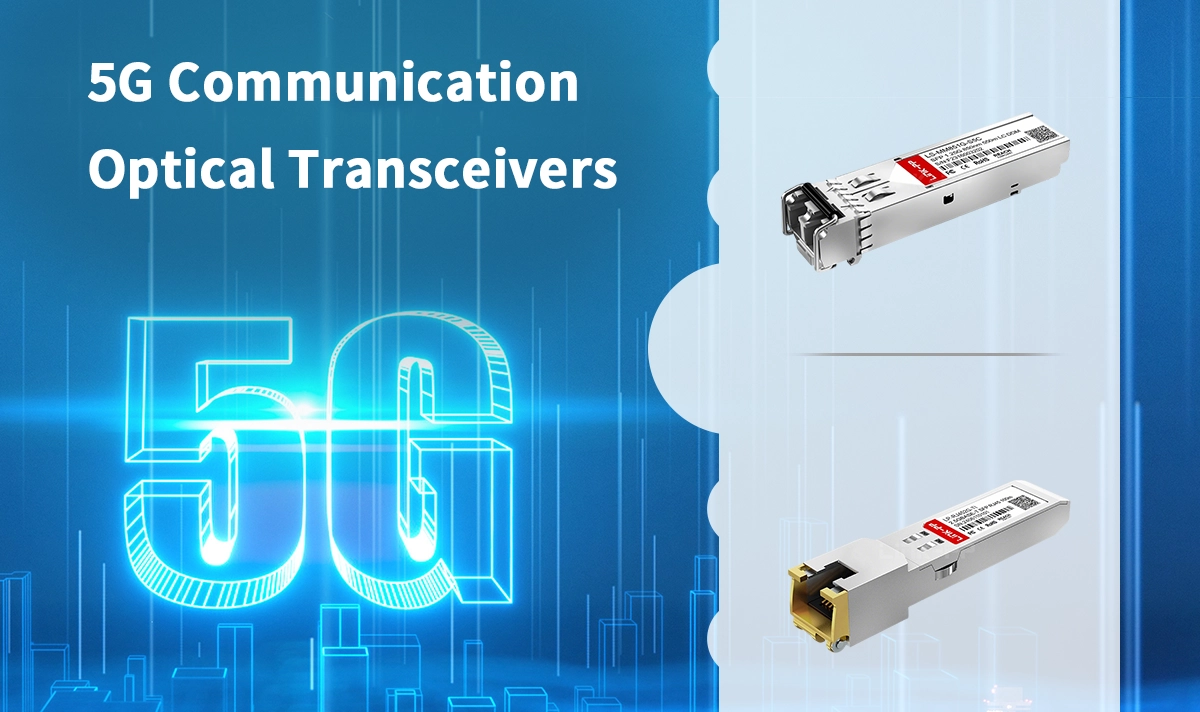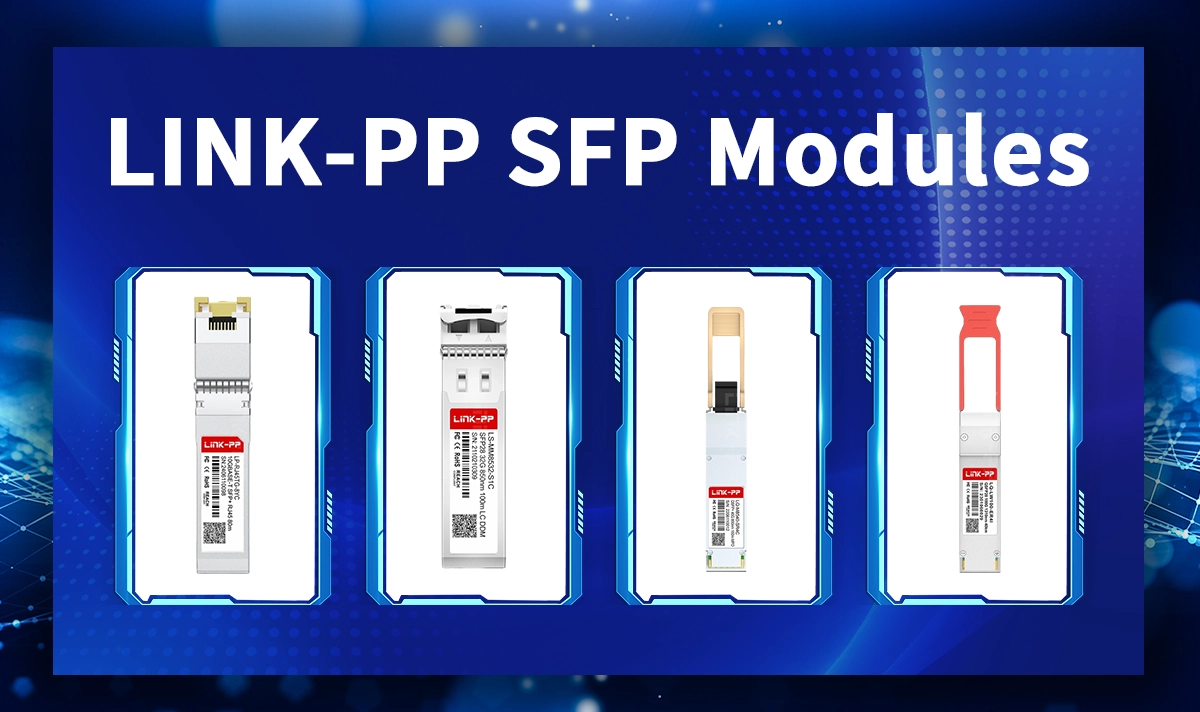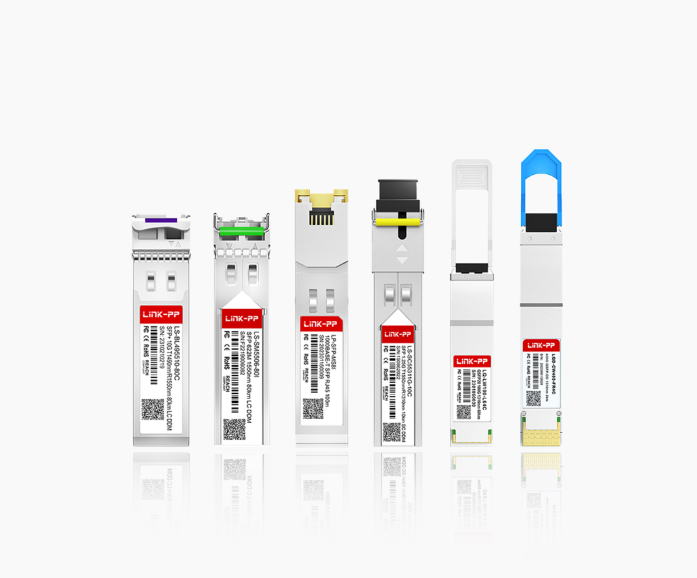
The deployment of 5G networks has accelerated the demand for high-performance optical modules, which serve as the backbone of high-speed, low-latency data transmission in wireless infrastructure. From the fronthaul of base stations to the backhaul connecting core networks, optical transceivers are essential for enabling 5G’s promised bandwidth and responsiveness.
This article explores the critical role of optical modules in 5G communication, their key specifications, types, and how they differ from traditional modules.
Why Optical Modules Matter in 5G
Unlike 4G LTE, 5G networks require significantly higher data throughput and lower latency, particularly for real-time applications like autonomous driving, remote surgery, and industrial IoT. To meet these demands, optical modules are deployed across three layers:
Fronthaul: Connects the Radio Unit (RU) and Distributed Unit (DU)
Midhaul: Links the DU and Centralized Unit (CU)
Backhaul: Connects the CU to the core network or data center
These layers require different types of fiber-optic transceivers optimized for specific distances, bandwidths, and protocols (e.g., CPRI/eCPRI).
Common Optical Module Types in 5G Networks
Module Type | Speed | Application | Protocol |
|---|---|---|---|
25Gbps | Fronthaul (RU ↔ DU) | CPRI / eCPRI | |
100Gbps | Midhaul / Backhaul | Ethernet | |
400Gbps | Data Center Interconnect | Ethernet | |
10G / 25G / 100G | Long-distance backhaul and metro/core network interconnection | Wavelength division multiplexing | |
10G / 25G | Fiber-constrained fronthaul | eCPRI over single fiber |
Key Features of 5G Optical Modules
Low Latency
Critical for CPRI/eCPRI interfaces in fronthaul.
Modules must support deterministic transmission and low jitter.
High Bandwidth
25G per channel is increasingly adopted as a mainstream option for fronthaul links, although 10G is still commonly used in some deployments.
100G and 400G transceivers are commonly used for aggregated midhaul and backhaul, especially in dense urban or core network scenarios.
Compact Form Factor
Space constraints in outdoor RU/DUs require SFP/SFP28 over bulky solutions.
Industrial-Grade Reliability
Support for extended temperature ranges (-40°C to +85°C).
Ruggedized for harsh outdoor deployments (e.g., street-level micro base stations).
Support for DDM / Digital Monitoring
Helps operators monitor module health in real-time to avoid link failures.
Common Use Case Example: 25G SFP28 Optical Modules in Fronthaul
As 5G fronthaul traffic rapidly increases, SFP28 optical modules have become the de facto standard. They:
Support 25G eCPRI links over single-mode fiber.
Offer transmission distances of up to 10–20 km (with LR versions).
Designed for compatibility with major vendors such as Ericsson, Huawei, and Cisco.
LINK-PP’s 5G-Compatible SFP Optical Modules

If you’re looking for 5G-ready transceivers that combine performance, cost-efficiency, and global compatibility, LINK-PP offers a robust portfolio of optical modules for 5G deployments, including:
25G SFP28 LR/ER Modules for 10–40 km fronthaul
10G/25G BiDi SFP Modules for single-fiber base station deployments
100G QSFP28 Transceivers for midhaul and backhaul uplinks
CPRI/eCPRI compliant transceivers for both legacy and next-gen RRU/DU architectures
🔗 Explore LINK-PP's SFP Module Range Here:
All LINK-PP optical modules are fully tested, RoHS-compliant, and compatible with major OEM devices (Huawei, Arista, Juniper, FS, Cisco, etc.).
📌 Our industrial-grade options support extreme temperature environments, making them ideal for 5G small cell and edge deployments.
Future Trends in 5G Optical Modules
1. Evolution to 50G and Beyond
The next phase of 5G (5G Advanced) may require 50G PAM4-based modules for even faster fronthaul links.
2. Co-packaged Optics (CPO)
Brings optics closer to the switch ASIC for lower power and higher integration in data center backhaul.
3. Open RAN Compatibility
Optical modules supporting O-RAN-defined open fronthaul interfaces (e.g., eCPRI over 7.2x split) to promote interoperability.
4. AI-Driven Optical Monitoring
Emerging approaches in software-defined monitoring aim to dynamically detect degradation in real-time and self-optimize optical links.
Conclusion
5G optical modules are no longer generic pluggable components—they are highly specialized, protocol-aware, temperature-hardened devices that power the next generation of mobile infrastructure. From 25G SFP28 in fronthaul to 100G+ transceivers in backhaul, selecting the right module is crucial for achieving ultra-low latency, high capacity, and long-term network reliability.




